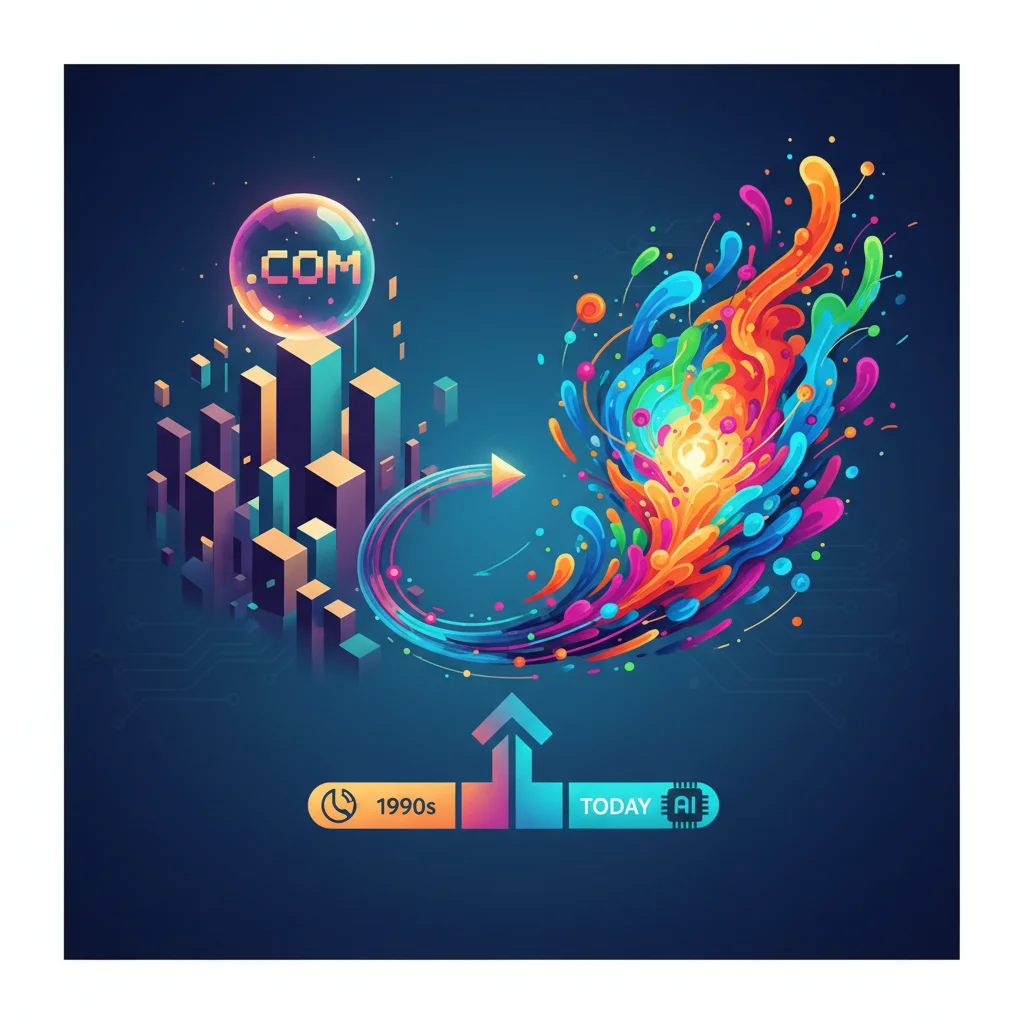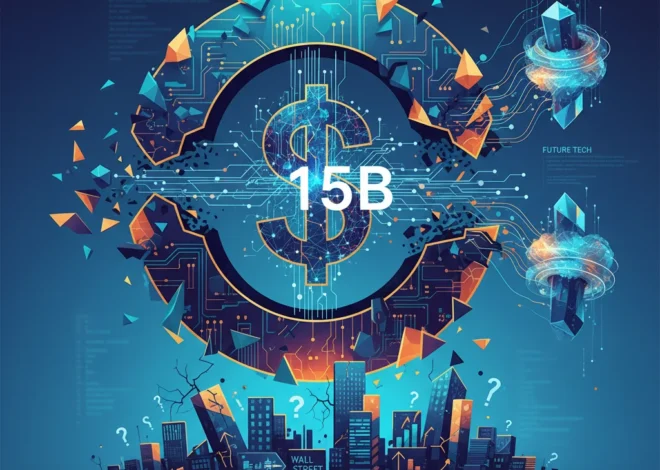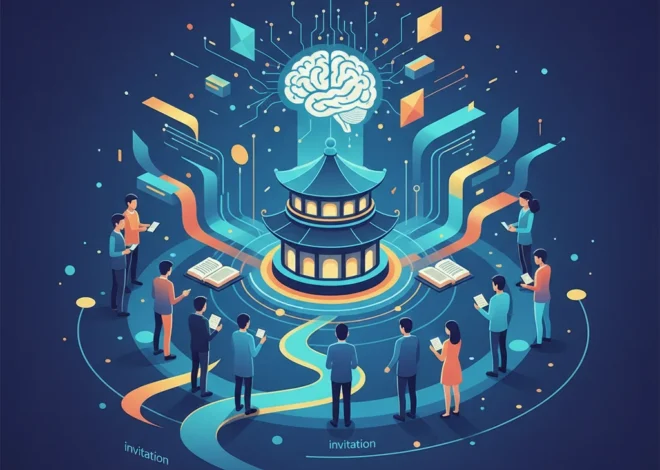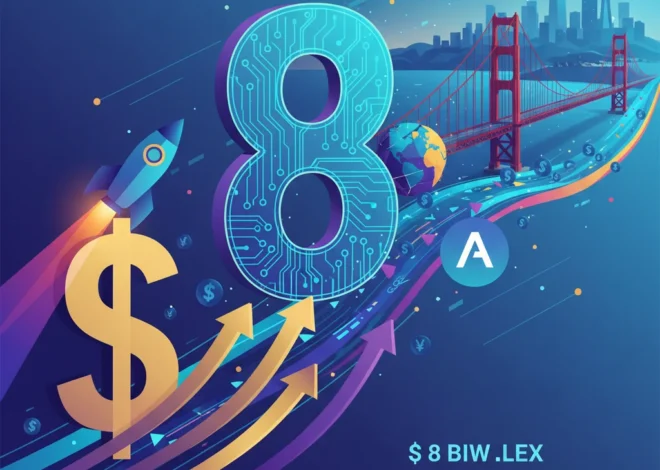
AI’s Dot-Com Déjà Vu: Why This Tech Boom is Faster, Fiercer, and Fundamentally Different
Remember the late 1990s? The dial-up modem shrieks, the breathless IPO announcements, and the unshakeable belief that a “.com” at the end of your company name was a license to print money. It was a time of wild optimism, a gold rush where the new frontier was digital. If you’re feeling a sense of déjà vu watching the current artificial intelligence explosion, you’re not alone. The parallels are striking, but the reality is far more complex.
The current AI boom, fueled by advancements in machine learning and generative models, feels like a direct sequel to the dot-com era. Yet, while history seems to be rhyming, it’s not repeating. This isn’t just Dot-Com 2.0; it’s a fundamentally different beast—one that’s moving faster, hitting harder, and rewriting the rules of innovation on the fly. Let’s explore the echoes of the past and the critical distinctions that define today’s AI revolution.
Blackstone's Billion-Dollar AI Warning: Is Wall Street Asleep at the Wheel?
The Picks, Shovels, and Paradigm Shifts: Echoes of the 90s
Every gold rush has two kinds of winners: those who strike gold, and those who sell the picks and shovels. In the 90s, the “picks and shovels” companies were the ones building the internet’s backbone. While Pets.com was burning through venture capital, companies like Cisco, Sun Microsystems, and Oracle were laying the physical and digital infrastructure that made the web possible. They were the undisputed kings of the new economy.
Fast forward to today, and the parallel is impossible to miss. As the FT article points out, Nvidia has become the Cisco of our time (source). The company’s GPUs are the essential “shovels” for any serious AI endeavor, powering the massive computational demands of training and running large language models. Similarly, cloud providers like AWS, Google Cloud, and Microsoft Azure are the new digital real estate, providing the scalable infrastructure that today’s startups are built upon.
The other major parallel is the emergence of a new, transformative user interface. The 1990s gave us the web browser, a graphical window that opened up the internet to the masses. It was a universal translator for a new digital world. Today, conversational AI—the simple act of typing a query into a chatbot—is emerging as the next great interface. It’s a new way to interact with computers, one that promises to be as revolutionary as the mouse or the touchscreen. This has kicked off a frantic race to build the “application layer” on top of this new platform, much like the rush to build websites in the late 90s.
Not Your Parents’ Tech Boom: Why AI is a Different Animal
Despite the familiar frenzy, the underlying mechanics of the AI boom are profoundly different from the dot-com era. The speed, accessibility, and economic models have been supercharged by three decades of technological progress. Understanding these differences is crucial for anyone building, investing in, or working with this new wave of software.
Here’s a breakdown of the key distinctions:
| Factor | Dot-Com Boom (1995-2001) | AI Boom (2022-Present) |
|---|---|---|
| Core Infrastructure | Physical: Fiber optics, servers, modems. Had to be physically built out. | Digital: Cloud computing, APIs, existing data centers. Primarily a software and silicon challenge. |
| Speed of Development | Relatively slow. Building a service required buying and managing physical servers. Scaling was a major capital expense. | Exponentially faster. A developer can spin up a powerful AI application in a weekend using APIs from OpenAI or Hugging Face. |
| Cost of Entry | High. Significant upfront investment in hardware, software licenses, and data center space. | Dramatically lower. Startups can leverage pay-as-you-go cloud services and pre-trained models, minimizing initial capital outlay. |
| Monetization Model | Uncertain. “Get eyeballs first, figure out revenue later.” Primarily ad-based. | Clearer path. API-based pricing, SaaS subscriptions, and direct integration into existing enterprise workflows provide immediate revenue streams. |
| Role of Incumbents | Often caught off guard (e.g., Microsoft’s initial slow response to the internet). Disruption came from outsiders. | Central players. Big Tech (Microsoft, Google, Amazon, Meta) are driving the boom, providing the foundational models and infrastructure. |
From Teenage Dream to 0M Reality: How CoMind's AI is Unlocking the Secrets of the Brain
The most critical difference is speed. The internet was built on atoms as much as bits; it took years to lay fiber and for consumers to get online. The AI revolution, by contrast, is almost purely software-driven, built on top of the global cloud infrastructure we spent the last 20 years constructing. As one venture capitalist noted, the time between a new technology’s arrival and its appearance in applications has collapsed from years to weeks (source). This creates an environment of breathtakingly fast innovation but also intense, cut-throat competition.
Furthermore, the cost of experimentation has plummeted. In 1999, launching a web service meant a trip to the server farm. In 2024, it means a few lines of code calling an API. This democratization of power is a double-edged sword: while anyone can build an AI-powered app, creating something truly defensible and valuable is harder than ever.
Navigating the New Frontier: A Playbook for the AI Era
So, what do these historical lessons and modern realities mean for those of us on the ground? Whether you’re an entrepreneur, a developer, or an investor, the strategy needs to adapt to this new landscape.
For Entrepreneurs & Startups:
The low barrier to entry means that a “thin wrapper” around a GPT-4 API is not a business model. The market is already flooded with them. Sustainable advantage will come from what it always has: unique data, proprietary distribution channels, and a deep understanding of a specific customer’s workflow. The most successful AI startups won’t just offer generic intelligence; they’ll provide targeted automation and insights for specific industries. Focus on solving a painful, expensive problem for a niche audience that you can own.
For Developers & Tech Professionals:
The nature of programming is evolving. While foundational skills remain critical, the new frontier is in system design, prompt engineering, and the fine-tuning of existing models. The most valuable engineers will be those who can effectively orchestrate and integrate multiple AI services to create a cohesive product. This is a shift from writing every line of code from scratch to becoming an expert conductor of intelligent systems. Furthermore, with the rise of AI-powered development tools, soft skills—communication, product thinking, and strategic problem-solving—become even more of a differentiator. And let’s not forget cybersecurity; securing AI models and the data they use is a massive and growing challenge.
The TikTok Code: How an AI Startup Outsmarted the World
For Investors & Business Leaders:
Discerning hype from substance is the name of the game. While the potential for an economic boom driven by AI-powered productivity gains is real—some analysts predict it could add trillions to the global economy (source)—not every company with “AI” in its pitch deck will be a winner. Look for businesses that are not just using AI, but are being fundamentally reshaped by it. Ask the hard questions: Does this application have a data moat? Is its value proposition defensible? How does it fit into the broader ecosystem dominated by Big Tech?
Conclusion: History’s Lessons in a High-Speed World
The ghost of the 1990s haunts the modern tech landscape, offering us a familiar script of hype, hope, and disruption. The AI boom is indeed a platform shift as significant as the internet. But it’s happening on a playing field that has been completely transformed by the cloud, SaaS, and mobile computing.
This revolution is faster, more accessible, and more deeply integrated into the existing tech oligopoly. The opportunities for innovation are immense, but the competitive cycles are brutally short. By understanding both the echoes of the dot-com era and the unique dynamics of today, we can better navigate the turbulence and harness the incredible power of artificial intelligence to build the future—this time, hopefully, with fewer sock puppets and a little more sustainable value.


